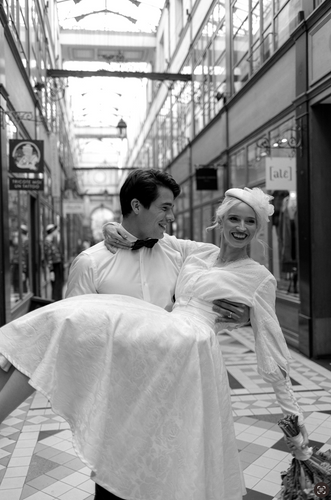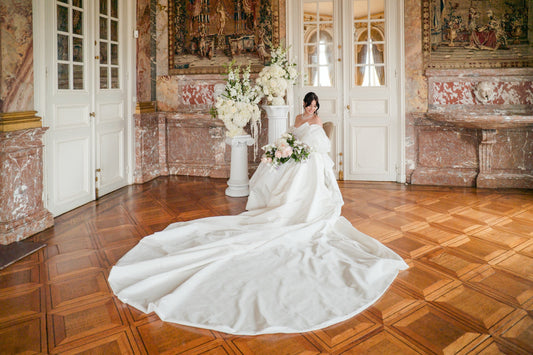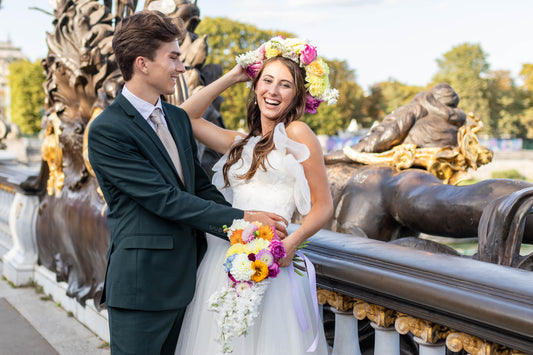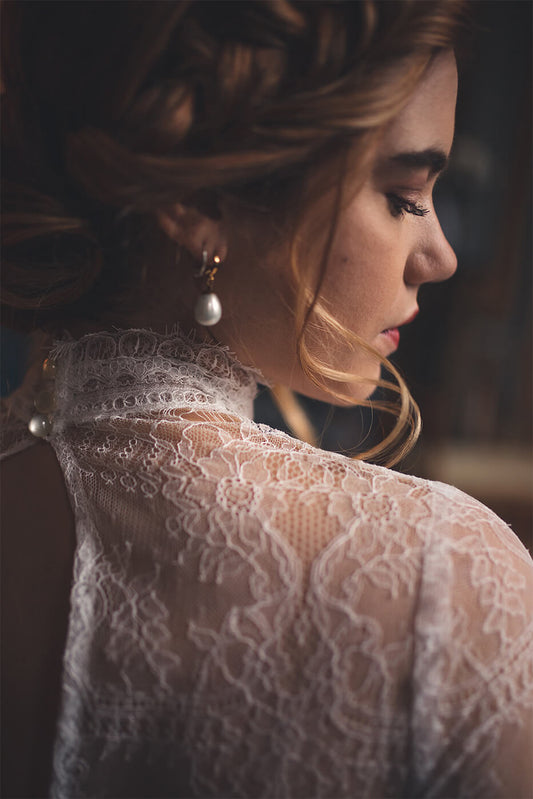
The History of Fashion in the 20th Century (Part 1/2)
Share this article
Summarizing a century of fashion is a bit like trying to fit a ruffled dress into a carry-on suitcase: risky, but necessary. It's a story where each decade reinvents elegance , shakes up codes, and stands as a witness to major social changes. Between the audacity of the Roaring Twenties, the ingenuity of wartime, and the stylistic revolutions of the sixties, fashion has become much more than a question of clothes: it is a living language speaking as much of the past as of the future.
Challenging the norms
More than an appearance
Fashion , from the Latin modus , means "measure." A simple etymology that nevertheless reflects the richness of a concept. Dressing is not a trivial act: it is about conforming or, on the contrary, standing out. In the 20th century, fashion became a quest for novelty, a search for originality, even a way of challenging established norms. It is not just about appearances: it tells the story of an era , reflects social and political trends, and foreshadows the upheavals to come.
A changing context
1870: Napoleon III bows to Prussia, and with him the Second Empire. The Third Republic is established in a country in turmoil. Nineteen years later, the 1889 World's Fair erects the Eiffel Tower, emblem of a future built on steel and electricity. This wind of modernity also blows into the hushed salons of the bourgeoisie, which establishes itself as the dominant force in an industrial and republican France.
 Photo credit: Gwen Storie Photography - Dress: Atelier Alexandra Fabbri
Photo credit: Gwen Storie Photography - Dress: Atelier Alexandra Fabbri
With these changes, wardrobes evolved. Heavy petticoats gave way to more technical, yet still elegant, garments . At the end of the 19th century, fashion began to reinvent itself, driven by the spirit of social and technological innovation.
The emergence of the great houses
Towards haute couture
Before the mid-19th century, clothing was the domain of artisans. Tailors dedicated themselves to men's clothing, while seamstresses dressed women. This compartmentalized world was transformed with the emergence of a key figure: the designer.
Charles Frederick Worth revolutionizes Paris. This British visionary imposes a bold idea: designing entire collections. From now on, customers no longer dictate their desires; they choose from carefully orchestrated designs. Fashion moves from craft to art , the couturier becomes an artist. This is the beginning of haute couture.
The Roaring Twenties
At the turn of the 19th and 20th centuries, women's fashion began a slow revolution. The heavy constraints on clothing were relaxed, a movement that accelerated with the First World War. While men left for the front, women moved into factories and offices, adopting outfits that allowed them to move, work, and breathe.
The corset disappeared, replaced by more fluid cuts. Skirts became shorter, waists became flatter, and silhouettes became lighter. This transformation was not just aesthetic: it embodied social and political emancipation. By freeing themselves from the constraints of dress, women also claimed their place in society.
When crisis dresses sobriety
Elegance under pressure
The 1929 crisis struck like a thunderclap and shook more than just the financial markets. It reshuffled the cards, even in wardrobes. Gone were the exuberance and antics of the Roaring Twenties. Style became austere, thoughtful, almost severe. But while fashion bent under the restrictions, it didn't break.
During the Occupation, Paris, cut off from the rest of the world, had to redouble its ingenuity. Elegance was cobbled together. Precious materials disappeared, replaced by raffia, cork, and recycled fabric. Shoe soles, stripped of leather, were fashioned from wood or cork. Dresses, shortened by necessity, adopted straight, understated cuts, without ever sacrificing a certain allure.
A symbol of resilience
Beneath this imposed sobriety lies a message: resist. Resist penury, resist gloom, resist austerity. Dressing well becomes an almost subversive act, a way of resisting the weight of circumstances.
In Paris, women dare to be refined, even under duress. They recycle, reinvent, and create silhouettes that, without ostentatious flare, exude timeless grace. A cropped dress, a fitted collar, a knotted scarf: these are all gestures that affirm one essential fact: even in the midst of turmoil, the Parisian woman remains free.
The rise of the New Look
Revival of a dormant industry
In 1945, Europe was barely recovering from the ruins of World War II. Deprivations were slowly fading, including those that weighed heavily on wardrobes. Out went the practical, austere cuts dictated by rationing: in came dreams. With the end of fabric restrictions, the great names of Parisian couture returned to their needles, ready to restore France to its status as the world capital of fashion.
 Photo credit: Xen.Chik Photo - Dress: Atelier Alexandra Fabbri
Photo credit: Xen.Chik Photo - Dress: Atelier Alexandra Fabbri
It was in this surge of renewal that a brilliant and audacious idea emerged: the Théâtre de la Mode . Conceived by the Chambre Syndicale de la Couture Parisienne, this traveling exhibition took French know-how around the world. On miniature dolls, designers such as Carven, Marcel Rochas, Balmain and Schiaparelli presented exceptional pieces, as many testimonies to French elegance. Between 1945 and 1946, the initiative gave new life to an industry brought to its knees, while reminding the world that Paris remained the undisputed capital of fashion .
Dior and femininity
At the heart of this renaissance, one man would make history: Christian Dior. In 1947, the designer unveiled his "Corolle" collection, a stylistic revolution hailed by Carmel Snow, editor-in-chief of Harper's Bazaar , who instantly dubbed it the New Look .
The Dior silhouette contrasts with the rigid, minimalist lines of the war years. Here, an ostentatious, almost sculptural femininity is celebrated. Full skirts that sweep the calves, extremely defined wasp waists, hips subtly enhanced by padding, delicately sloping shoulders... Everything exudes luxury, excess, and a kind of nostalgia for the grand pre-war balls.
A dreamlike, but restrictive femininity
While the New Look may inspire dreams, it divides opinion. For some, it's an ode to rediscovered femininity, a revenge for the dark years. For others, this hourglass silhouette, glamorous as it may be, evokes an almost outdated physical constraint. Modern corsets and structured cuts impose a return to an idealized image of women, but far from the sartorial freedoms achieved before the war.
The polar opposite of the functional outfits of the 1940s, the New Look marked a complete break. It influenced Hollywood actresses, appeared in magazines, and became the symbol of a France resuming its historical thread, between splendor and nostalgia.
With the New Look, Dior didn't just create clothes: he invented a dream, that of a luxurious and magnified femininity. A dream that continues to fascinate today.
The second part is available here .



